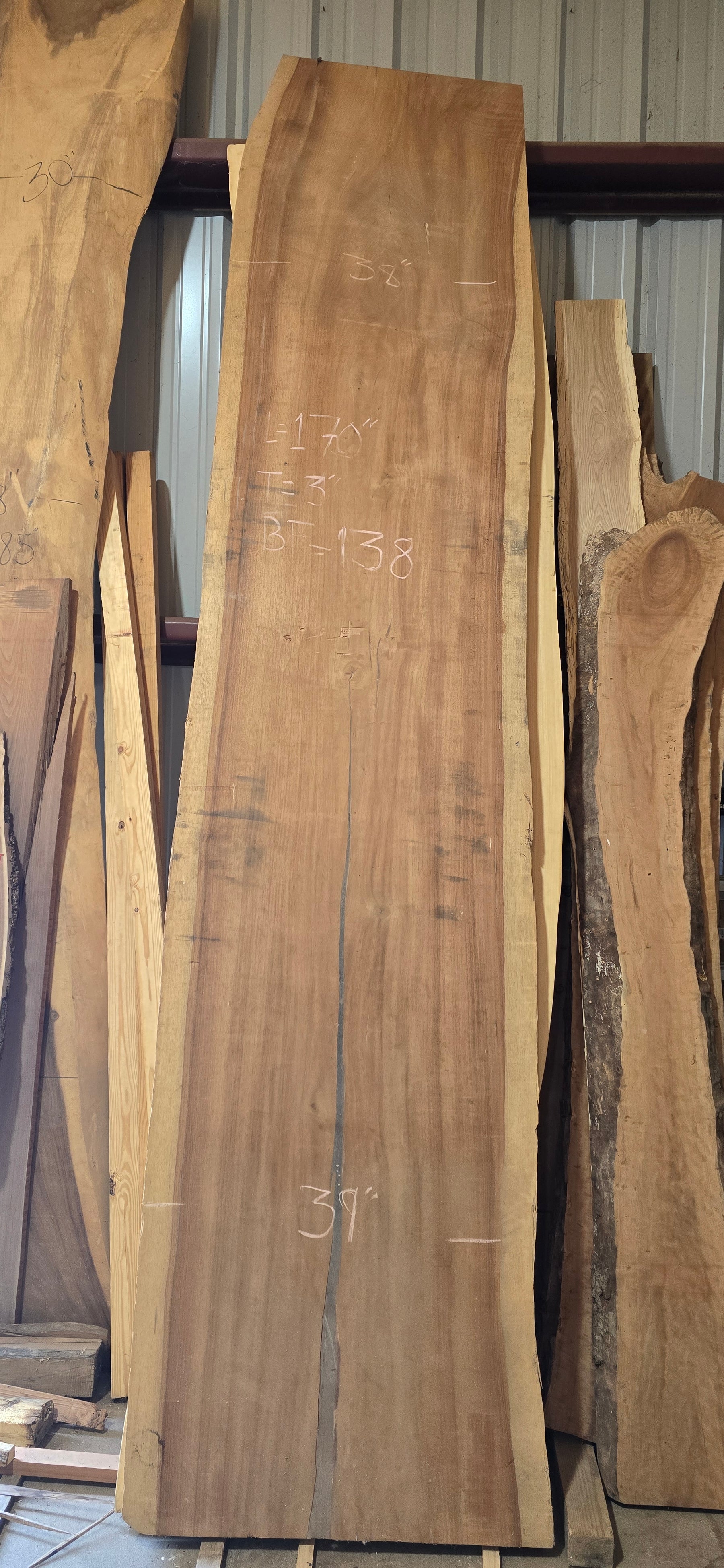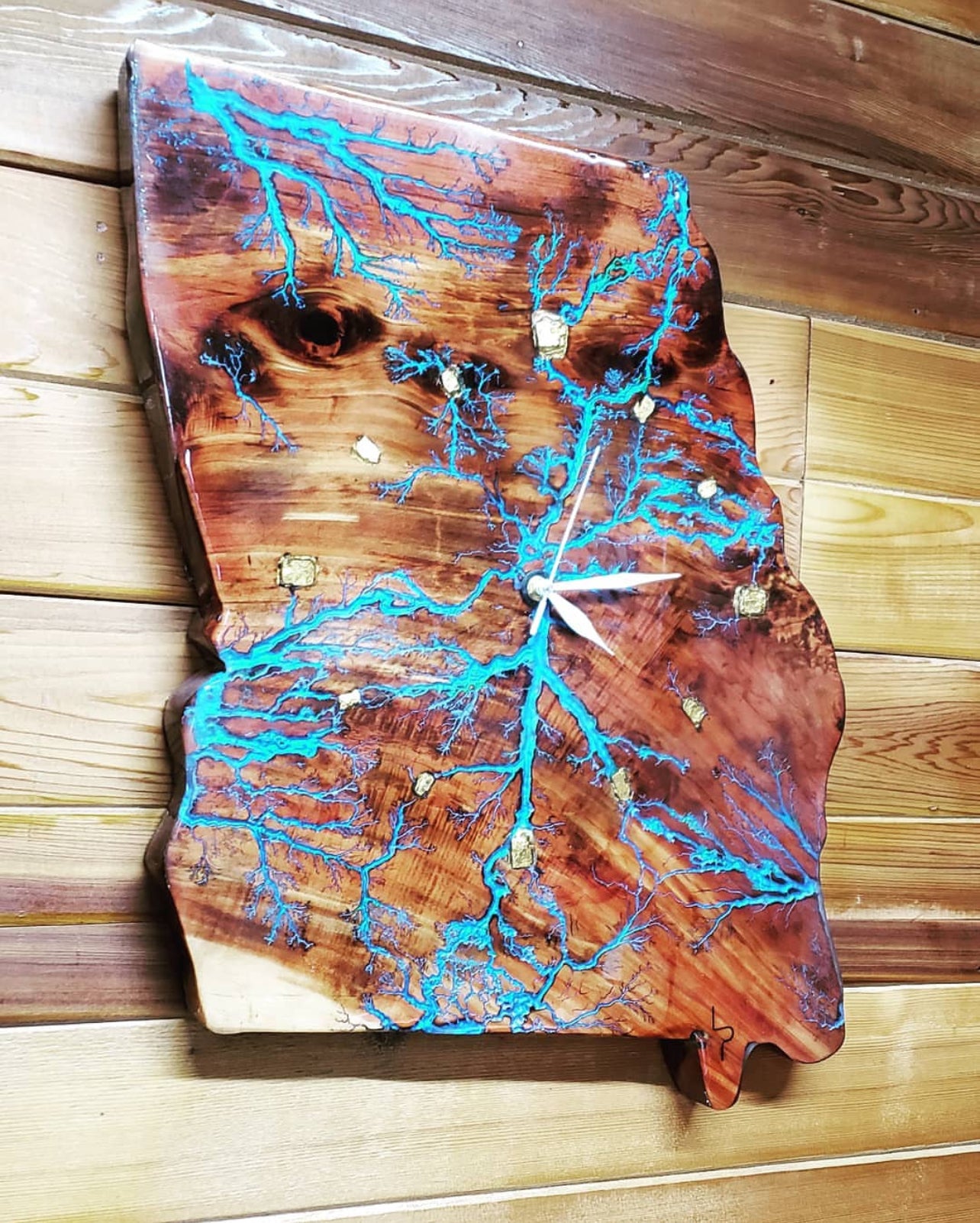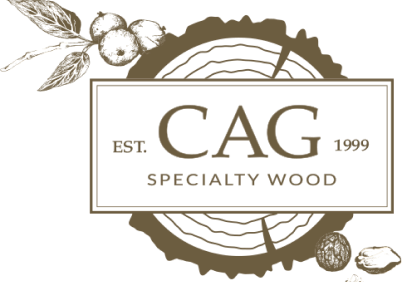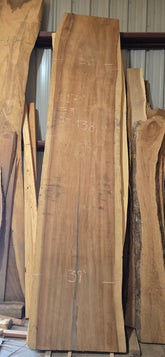

Monkeypod Slabs
|
Common Name(s): Monkeypod, Monkey Pod, Raintree Scientific Name: Albizia saman (syn. Samanea saman, Pithecellobium saman) Distribution: Central and South America (Also planted/naturalized in many tropical regions of the world) Tree Size: 100-125 ft (30-38 m) tall, 3-4 ft (1-1.2 m) trunk diameter Average Dried Weight: 38 lbs/ft3 (600 kg/m3) Specific Gravity (Basic, 12% MC): .48, .60 Janka Hardness: 900 lbf (4,010 N) Modulus of Rupture: 9,530 lbf/in2 (65.7 MPa) Elastic Modulus: 1,149,000 lbf/in2 (7.92 GPa) Crushing Strength: 5,790 lbf/in2 (39.9 MPa) Shrinkage: Radial: 2.0%, Tangential: 3.4%, Volumetric: 6.0%, T/R Ratio: 1.7 |
Color/Appearance: Color tends to be a golden to dark brown, sometimes with darker streaks. Sapwood is usually thin and yellow/white, clearly demarcated from the heartwood. Monkeypod is sometimes seen with highly figured curly or wild grain patterns.
Grain/Texture: Grain is usually straight, but can also be interlocked or wavy. Texture is medium to coarse, with medium to large open pores and a moderate natural luster.
Endgrain: Diffuse-porous; large to very large pores in no specific arrangement, very few to few; solitary and radial multiples of 2-3; heartwood deposits occasionally present; narrow rays usually not visible without lens, normal spacing; parenchyma vasicentric, lozenge, and confluent.
Rot Resistance: Rated as durable to very durable regarding decay resistance, Monkeypod is also resistant to most insect attacks.
Workability: Monkeypod is generally easy to work with both hand and machine tools, though any interlocked grain may result in fuzzy or torn grain during planing operations. Glues and finishes well.
Odor: No characteristic odor.
Allergies/Toxicity: Although severe reactions are quite uncommon, Monkeypod wood dust has been reported as an eye irritant. See the articles Wood Allergies and Toxicity and Wood Dust Safety for more information.
Pricing/Availability: Available as lumber, as well as craft wood in smaller sizes. Prices are in the mid to high range for imported wood. Monkeypod usually trends a little bit cheaper in price than Koa, all other things being equal. Boards with figured grain patterns are much more expensive.
Sustainability: This wood species is not listed in the CITES Appendices or on the IUCN Red List of Threatened Species.
Common Uses: Veneer, plywood, millwork/trim, carving, cabinetry, furniture, musical instruments (guitars and ukuleles), and other small specialty wood items.
Comments: So named for the spiral-shaped fruit pods which the tree bears. Outside of Hawaii, one of the most common names for the species is Raintree, which is due to the leaves’ tendency to fold up at night or during periods of rainfall, allowing rain to pass through its broad canopy to the vegetation below. Trees are commonly planted in tropical regions as an ornamental shrub or shade tree.
Monkeypod is called by many different names in many different cultures, and its lumber is likewise used for a number of different purposes depending on the locale, ranging from utility wood and construction purposes to fine furniture.
Related Species:
None available.
Monkeypod Slabs
Monkeypod Slab 1
4050 Old Cornelia Hwy
Gainesville GA 30507
United States
Wood Calculator Section
Need Help Figuring out how much you need ?
One Board foot = 144 Cubic Inches
Example: If you need a piece of wood 12 inches wide, 1 inch thick and 24 inches long, that is equal to 2 board feet.
12 inches x 1 inch x 24 inches = 288 inches. 288/ 144 = 2 board feet


